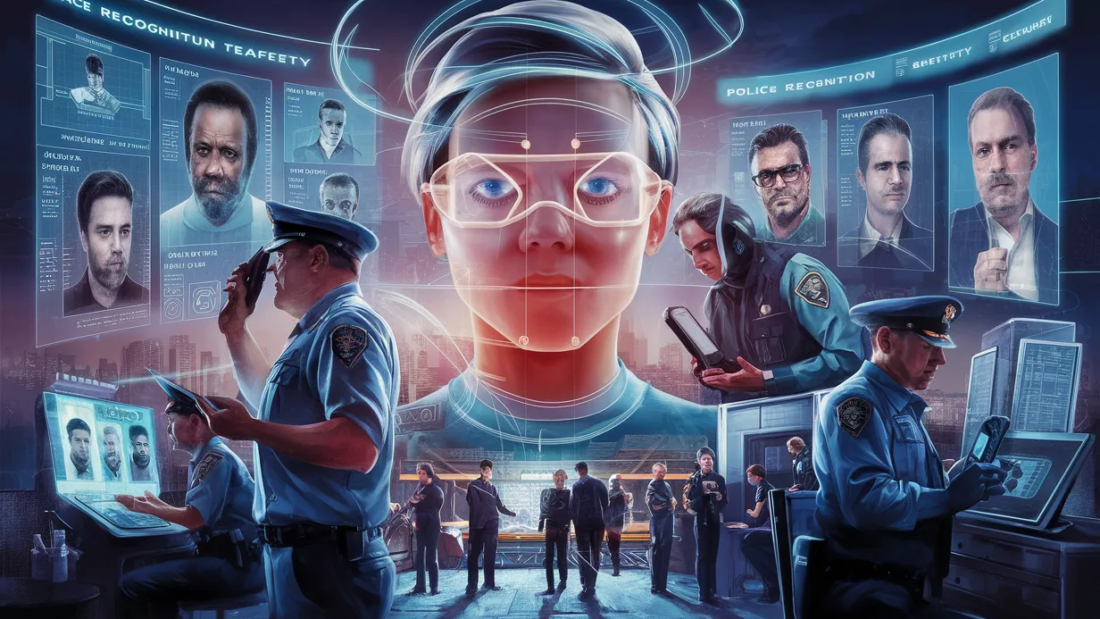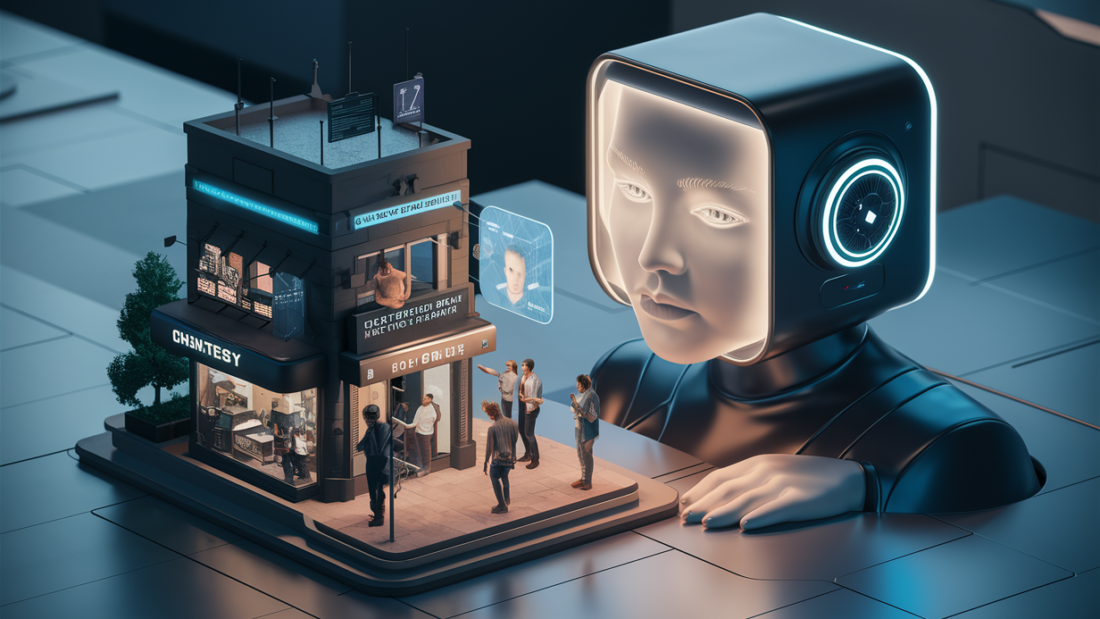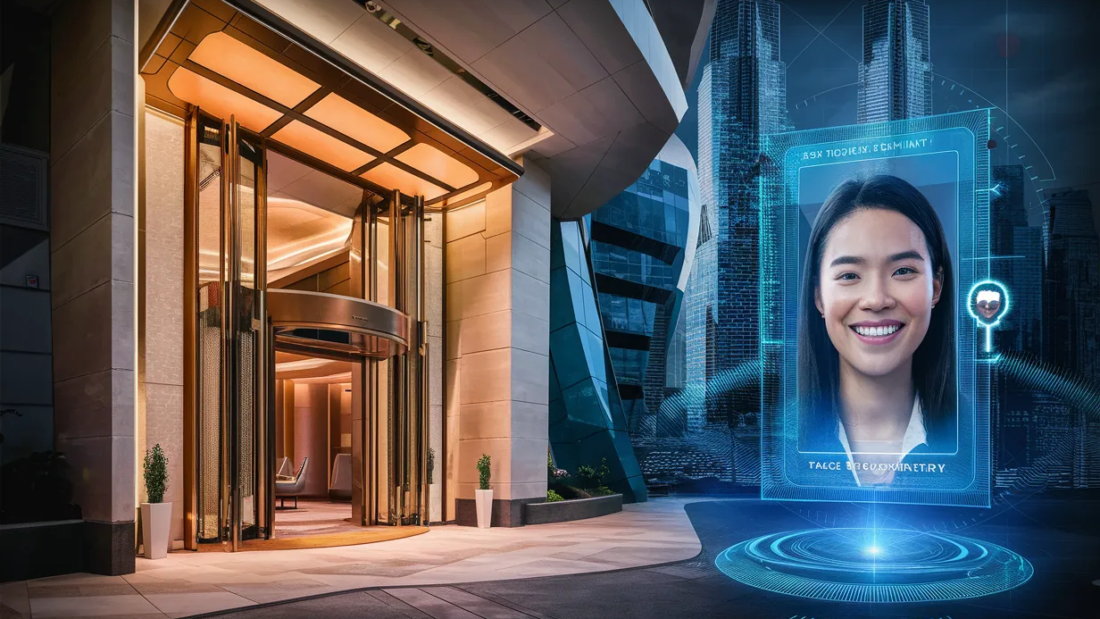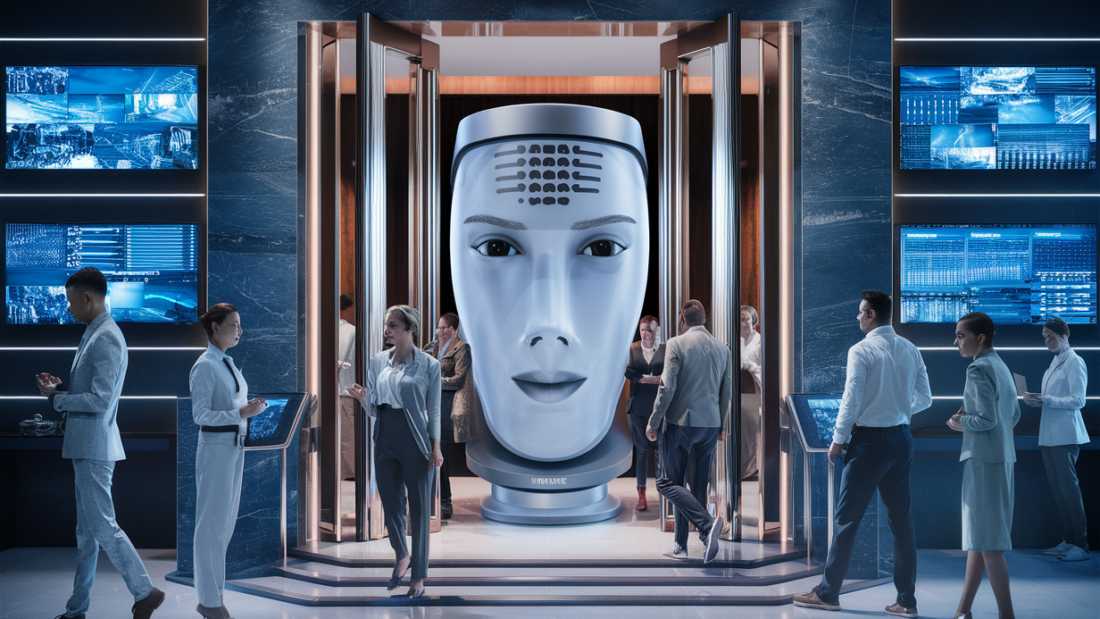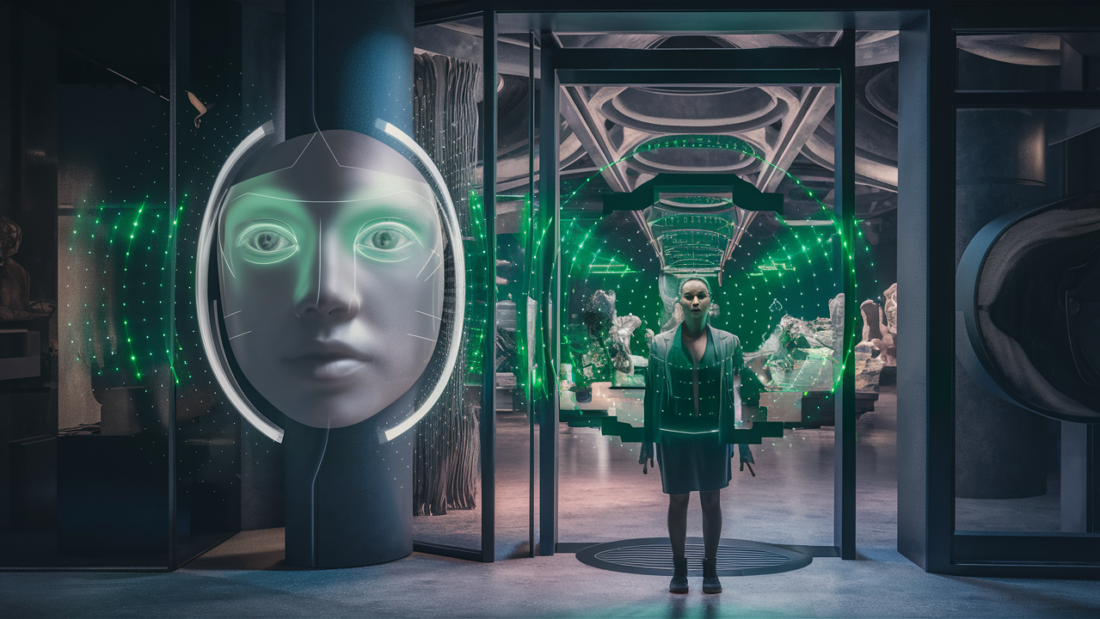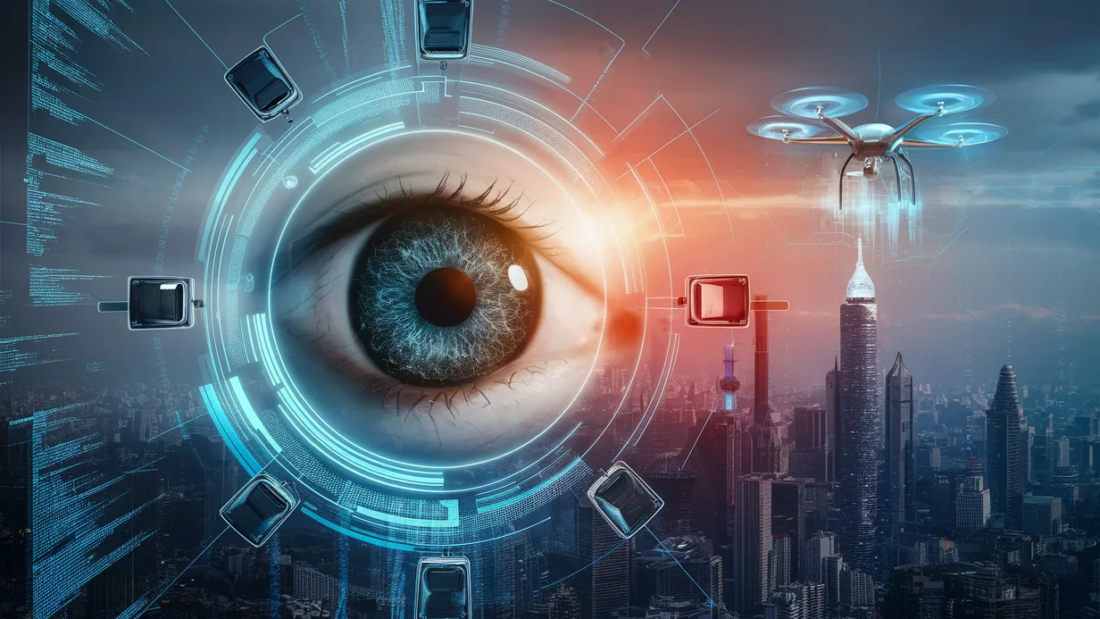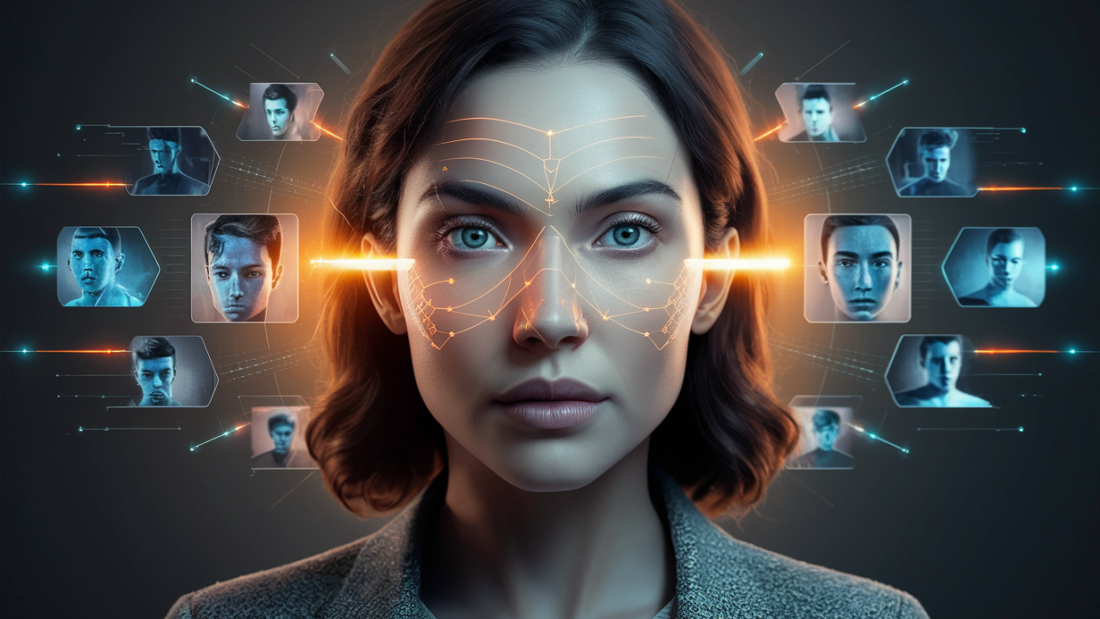In a world where security and convenience collide, face recognition technology emerges as the game-changer. Imagine effortlessly unlocking your phone with just a glance or enhancing building security without fumbling for keys. Face recognition offers a seamless blend of futuristic innovation and practicality, revolutionizing how we interact with devices and access controlled spaces.
This blog dives deep into the realm of face recognition, exploring its applications, benefits, and potential impact on daily life. From unlocking smartphones to securing sensitive data, this cutting-edge technology presents a stark contrast to traditional authentication methods. Join us on a journey through the fascinating landscape of face recognition technology.
Key Takeaways
- Understand the evolution of facial recognition technology to grasp its advancements over time.
- Learn how face recognition works to appreciate the complexity and potential applications of the technology.
- Explore the diverse applications in public safety, showcasing the critical role face recognition plays in enhancing security measures.
- Discover success stories from around the world that highlight the tangible benefits and positive outcomes of implementing face recognition technology.
- Recognize the challenges faced in the field and explore potential solutions to address privacy concerns and ethical implications.
- Stay informed about future trends in face recognition to anticipate upcoming developments and opportunities in this rapidly evolving technology landscape.
Evolution of Facial Recognition Technology
Computer Application
Facial recognition technology traces its origins back to the 1960s when it was first introduced as a computer application. Initially, this technology focused on identifying specific features in photographs rather than real-time detection.
FERET Program Establishment
In the 1990s, significant advancements were made in facial recognition with the establishment of the FERET program by DARPA and ARL. This program aimed to develop face recognition capabilities for security and surveillance purposes.
Viola-Jones Algorithm
A major breakthrough occurred in 2001 with the introduction of the Viola-Jones algorithm, which revolutionized face detection by enabling real-time processing. This algorithm’s efficiency paved the way for various applications, including biometric security systems and photo editing software.
How Face Recognition Works
Matching Faces
Face recognition technology matches human faces from digital images or video frames. It analyzes facial features, such as the distance between the eyes, nose shape, and jawline, to create a unique faceprint for each individual. This process allows systems to compare these faceprints with those stored in databases for identification purposes.
User Authentication
Apart from identification, face recognition also plays a crucial role in user authentication. Many ID verification services utilize this technology to verify individuals’ identities securely. By capturing an image of the user’s face and comparing it with the stored data, systems can grant access or authenticate transactions based on the match results.
Facial Feature Measurement
One of the key functions of face recognition is measuring facial features accurately. This involves capturing various aspects of a person’s face, including the size and shape of their eyes, nose, and mouth. By analyzing these measurements, algorithms can distinguish between different individuals and provide reliable identification results.
In summary, face recognition technology operates by matching faces through analyzing unique facial features, authenticating users for security purposes, and precisely measuring facial characteristics for identification accuracy.
Applications in Public Safety
Video Surveillance
Face recognition technology plays a crucial role in enhancing public safety through video surveillance systems. By accurately identifying individuals in real-time, it enables advanced human-computer interaction, improving security measures significantly.
In video surveillance, face recognition algorithms analyze live feeds from cameras to detect and track individuals as they move within a monitored area. This capability is invaluable for law enforcement agencies, airports, and other public spaces where quick identification of suspects or missing persons is essential.
Law Enforcement
Law enforcement agencies widely deploy face recognition technology for various applications, including passenger screening at airports and border crossings. By matching faces against watchlists of known criminals or suspects, authorities can swiftly identify potential threats and take necessary actions to ensure public safety.
Face recognition systems integrated into security checkpoints help streamline the screening process by automating the identification of travelers. This not only enhances security protocols but also expedites the flow of passengers through busy terminals and border control points.
Employment Decisions and Housing Sectors
Beyond public safety initiatives, face recognition technology has found its way into employment decisions and housing sectors. Companies utilize facial recognition software during recruitment processes to verify the identity of job applicants and prevent fraudulent activities such as impersonation.
In the housing sector, property management firms leverage face recognition systems to enhance building security by restricting access to authorized personnel only. This technology provides an added layer of protection against unauthorized entry and helps maintain a safe environment for residents.
Success Stories Across the Globe
DMV Offices Utilizing Facial Recognition Technology
Facial recognition technology has been increasingly utilized by DMV offices to enhance security measures and prevent identity fraud. By capturing and analyzing facial features, these systems help verify individuals’ identities more accurately, reducing the risks associated with fake IDs and fraudulent activities.
The integration of facial recognition technology in DMV operations has significantly improved the efficiency of identity verification processes. By comparing the facial features of individuals against a comprehensive database, these systems can quickly identify any discrepancies or inconsistencies, flagging potential cases of identity theft or fraud for further investigation.
Companies Emerging from FERET Tests
Notable companies like Vision Corporation and Viisage Technology have emerged as key players in the field of facial recognition technology, tracing their origins back to the FERET tests. These tests, conducted by the U.S. Department of Defense in the 1990s, aimed to advance facial recognition capabilities for military and civilian applications.
The success of Vision Corporation and Viisage Technology in developing advanced facial recognition solutions following the FERET tests highlights the pivotal role of research and innovation in driving technological advancements. Their contributions have not only revolutionized security protocols but also paved the way for widespread adoption of facial recognition across various industries.
Early Adopters: West Virginia and New Mexico DMVs
The Department of Motor Vehicles (DMVs) in West Virginia and New Mexico were among the early adopters of facial recognition technology for identity verification purposes. By embracing this innovative technology, these agencies demonstrated a proactive approach towards enhancing security measures and combatting identity fraud within their jurisdictions.
The implementation of facial recognition systems at West Virginia and New Mexico DMVs has yielded tangible benefits in terms of streamlined processes and enhanced security protocols. These advancements have not only expedited identification procedures but also strengthened efforts to safeguard personal information and prevent unauthorized access to sensitive data.
Challenges and Solutions
Privacy Concerns
Privacy violations remain a significant challenge in face recognition technology. Individuals are worried about their personal information being misused or accessed without consent. This issue is further exacerbated by the potential for racial profiling, where certain groups may be unfairly targeted or discriminated against.
Security Risks
The security of biometric data used in face recognition systems is a pressing concern. If this data falls into the wrong hands, it can lead to identity theft, fraud, and other malicious activities. Protecting this sensitive information is crucial to prevent unauthorized access and misuse.
Bans on Facial Recognition
Several cities in the United States have taken proactive measures by banning facial recognition systems within their jurisdictions. These bans stem from the growing privacy concerns surrounding the technology and its implications for civil liberties. By implementing these restrictions, cities aim to safeguard their residents’ privacy rights and prevent potential abuses of facial recognition technology.
Future Trends in Face Recognition
Deep Learning Advancements
Recent years have seen significant advancements in deep learning algorithms applied to face recognition technology. These improvements have led to a notable increase in accuracy rates, making facial recognition systems more reliable and efficient. By leveraging deep learning techniques, such as convolutional neural networks (CNNs) and recurrent neural networks (RNNs), developers have been able to enhance the overall performance of facial recognition systems.
The integration of deep learning algorithms has enabled facial recognition systems to handle complex tasks with greater precision. For instance, by training these algorithms on vast datasets containing diverse facial features, the models can now identify individuals with higher accuracy rates, even in challenging conditions like low light or partial obstructions. This level of accuracy is crucial for applications in security, access control, and personalized user experiences.
Artificial Intelligence Integration
The fusion of face recognition technology with artificial intelligence (AI) has opened up new possibilities for enhancing functionalities and expanding applications. AI-powered facial recognition systems can now perform advanced tasks such as emotion detection, age estimation, gender classification, and even identifying individuals based on their gait or behavior patterns. By incorporating AI capabilities into face recognition technology, developers can create more intelligent and adaptive systems that can cater to a wide range of use cases.
The integration of AI algorithms enables facial recognition systems to go beyond simple identification tasks and offer more sophisticated functionalities. For example, in retail settings, AI-powered facial recognition can analyze customer demographics and behaviors to provide personalized recommendations or targeted marketing strategies. Similarly, in healthcare, AI-integrated facial recognition systems can assist in patient monitoring, medication adherence tracking, and even early disease detection based on facial cues.
Diversification Across Industries
One of the most notable trends in face recognition technology is its potential expansion into diverse industries beyond traditional security and law enforcement applications. With advancements in accuracy and functionality, facial recognition systems are now being adopted across various sectors such as healthcare, retail, banking, transportation, and entertainment. In healthcare settings, facial recognition technology is being used for patient identification, access control to medical records, and even monitoring vital signs through facial analysis.
FaceOnLive’s Impact on Public Safety
Real-Time Advancements
FaceOnLive has significantly revolutionized public safety by introducing real-time face recognition technology. This innovation allows law enforcement agencies to swiftly identify individuals in various scenarios, greatly enhancing overall security measures.
The implementation of real-time face recognition by FaceOnLive has streamlined the process of identifying suspects in criminal investigations. By quickly matching faces against existing databases, law enforcement can promptly apprehend individuals involved in criminal activities.
Emergency Response Enhancement
FaceOnLive’s technology plays a crucial role in improving response times during emergency situations. In critical incidents where every second counts, the ability to identify individuals swiftly through facial recognition aids first responders in taking necessary actions promptly.
By incorporating FaceOnLive’s face recognition technology into public safety protocols, authorities can boost their efficiency and effectiveness in handling emergencies. The rapid identification of individuals enables responders to make informed decisions swiftly, potentially saving lives in critical situations.
Law Enforcement Support
The utilization of FaceOnLive’s face recognition technology provides law enforcement with a powerful tool to combat crime effectively. By accurately identifying suspects and persons of interest in real-time, authorities can expedite investigations and bring perpetrators to justice more efficiently.
Moreover, the integration of FaceOnLive’s technology into surveillance systems enhances monitoring capabilities, enabling law enforcement to maintain a vigilant watch over public spaces. This proactive approach contributes to deterring criminal activities and ensuring public safety.
Engaging Law Enforcement with FaceOnLive
Training Law Enforcement
Law enforcement agencies undergo comprehensive training to utilize FaceOnLive effectively for crime prevention. Officers learn how to operate the system, analyze data, and identify individuals accurately.
FaceOnLive training sessions cover various aspects such as facial recognition algorithms, database management, and real-time monitoring. This equips law enforcement with the necessary skills to leverage the technology efficiently.
Collaborating with Police
Collaboration between FaceOnLive and police departments is crucial for implementing facial recognition tools successfully. Regular meetings and workshops ensure seamless integration into existing law enforcement procedures.
By working closely with police departments, FaceOnLive can customize solutions based on specific needs and requirements. This collaboration enhances the effectiveness of using facial recognition in solving crimes.
Showcasing Success Stories
FaceOnLive showcases numerous success stories where its technology has played a pivotal role in law enforcement operations. These stories highlight instances where criminals were identified swiftly and brought to justice.
One notable success story involves a robbery case where FaceOnLive’s facial recognition capabilities led to the quick arrest of the suspect. Such examples demonstrate the tangible benefits of integrating advanced technology like FaceOnLive in law enforcement practices.
Summary
You’ve now explored the evolution, workings, applications, success stories, challenges, and future trends of facial recognition technology. From enhancing public safety to revolutionizing law enforcement practices, FaceOnLive stands out as a game-changer in the field. By leveraging this cutting-edge technology, law enforcement agencies can significantly boost their efficiency and effectiveness in identifying and tracking suspects.
As you delve deeper into the realm of facial recognition technology, consider how you can advocate for responsible and ethical use of these tools in your community. Stay informed about the latest developments and engage in conversations about the implications of widespread facial recognition adoption. Your involvement can shape the future landscape of public safety technologies. Embrace the power of innovation while upholding values of privacy and security.
Frequently Asked Questions
How has facial recognition technology evolved over time?
Facial recognition technology has advanced from basic image processing to sophisticated algorithms using artificial intelligence. It now offers faster and more accurate identification capabilities, revolutionizing security and surveillance systems.
How does face recognition work?
Face recognition works by analyzing unique facial features such as the distance between eyes, shape of the nose, and jawline. Algorithms compare these features with a database of known faces to identify individuals accurately.
What are some common applications of face recognition in public safety?
Face recognition is widely used in public safety for tasks like identifying criminals in crowds, monitoring high-security areas, and enhancing surveillance systems at airports and borders.
Can you provide examples of successful face recognition implementations worldwide?
Successful face recognition implementations include using the technology to locate missing persons, prevent crime through real-time monitoring, and improve security measures at major events like concerts and sports matches.
What are some challenges faced in the field of face recognition, and how can they be overcome?
Challenges in face recognition include privacy concerns, bias in algorithms, and limitations in accuracy under certain conditions. These issues can be addressed through transparency in data usage, continuous algorithm improvement, and ethical guidelines for deployment.
